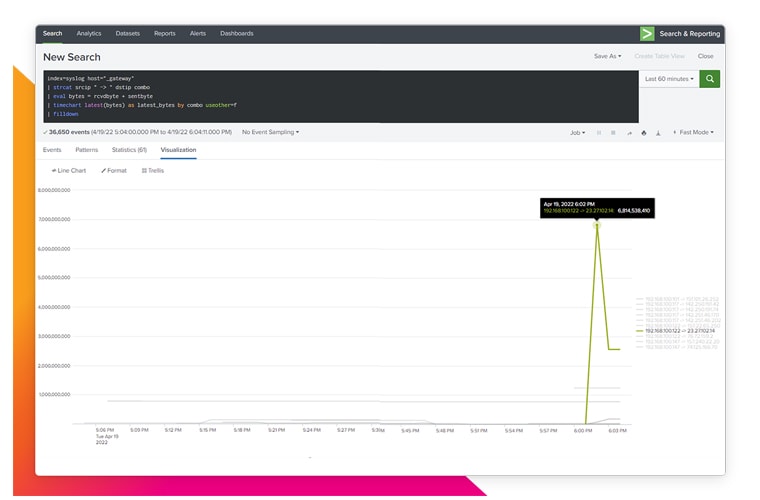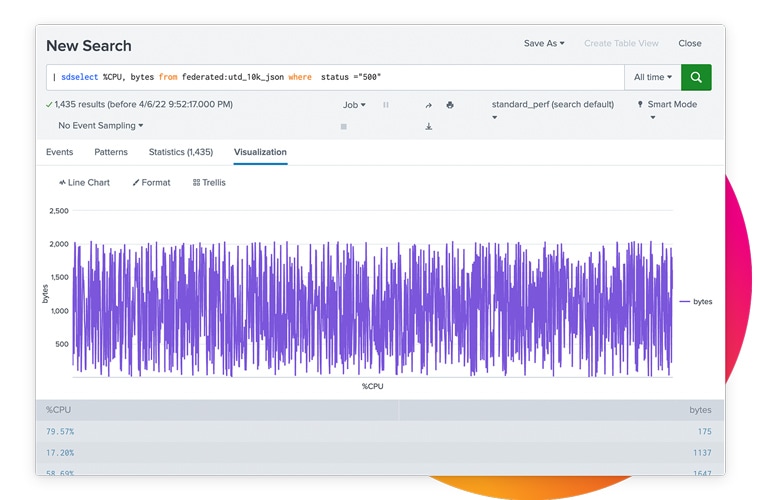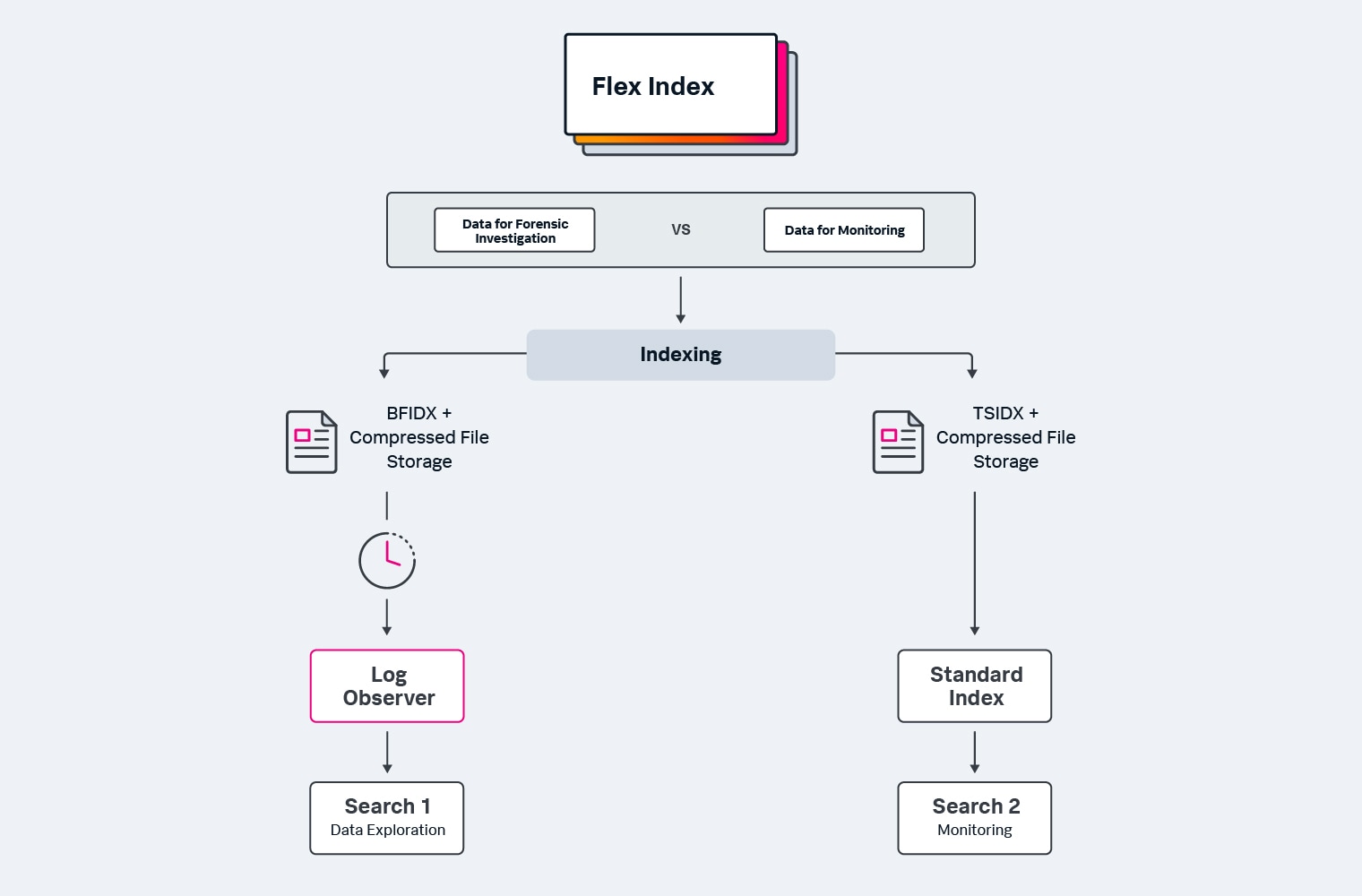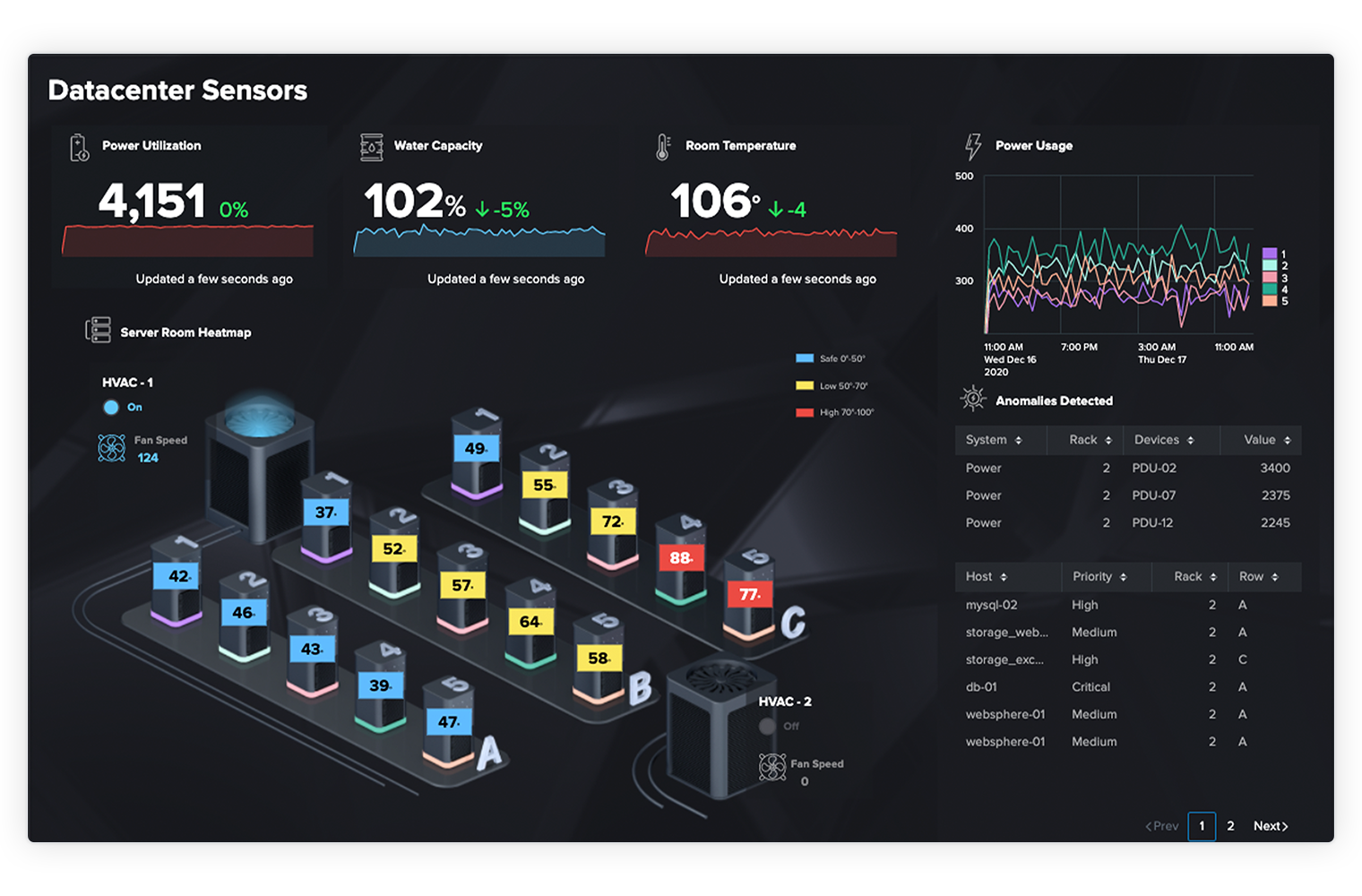Get cloud-powered insights for petabyte-scale data analytics across the hybrid cloud.
challenge
As data volumes grow, extracting value from every byte gets harder
The world of data is changing. Explosive growth, retention complications, data gravity and varied value make moving and managing data increasingly difficult and expensive. Companies are challenged to align needs, costs and effort to support business strategies and deliver operational advantage.
solution
Develop a value-based data strategy
Tier value
Categorize your data based on its business value — from critical to compliant.
Plan for use
Balance search performance with data value to address business needs.
Align cost to value
Filter and route data based on business value. Store cost effectively by value and search when needed.

Analyze and visualize any data
Use powerful search and indexing for a complete view of your technology landscape. Quickly analyze your most critical data and create robust visualizations to address issues and understand opportunities.
Power selective use at scale
Store and manage low-signal data that needs to be accessed on an ad-hoc basis. Search across Splunk and third-party stores. And filter data for troubleshooting, forensic investigations or machine learning model training.


Archive and audit efficiently
Keep your lowest value data in long-term storage and data warehouses. Search it where it lives and only ingest into Splunk when needed. Future-proof your business with cost-effective compliance and simplified strategies.
Products
Manage explosive data growth more efficiently
Turn your data into doing and improve the cost effectiveness of storing data required for compliance. Better balance access and expenses with a value-tiered strategy and more efficient tools.
Automate and orchestrate the SOC
Empower security teams to work smarter, boost productivity and respond faster by automating and orchestrating security operations processes.
Splunkbase apps and integrations
Splunkbase apps and technical add-ons
Access apps and integrations for data optimization.
Data optimization is the practice of making changes to an organization’s data strategy to improve the speed and effectiveness of extracting, analyzing and using the data. Data can be optimized for specific use tiered value cases including 1) active use like security monitoring and investigation, 2) selective use at scale including troubleshooting, forensic investigation and machine learning algorithm datasets, or 3) archive and audit use cases like compliance.
Data optimization offers many benefits including:
- Speed for analysis and decision-making: With optimized data, business leaders can make better decisions faster. Optimized and prioritized data is critical for efficient operational intelligence. Using data that has not been optimized can require days or weeks of work to simply get the data to a usable state in order to analyze.
- Consistency and higher quality data available for mission-critical needs: A critical component of optimized data is consistency and availability. Without optimizing data, it's more likely that search times will be too slow for your most urgent data and unnecessarily fast for lower value audit purposes.
- Improved ROI: With a strong data optimization framework in place, data is stored and accessed based on its value to deliver timely business outcomes.
There are many ways to optimize data. Some common patterns include moving certain data to the cloud in a centralized location accessible to more people and applications, standardizing data formats, using algorithms to tune-up data to fit organizational goals and storing lower value or unnecessary, redundant data cost effectively.
